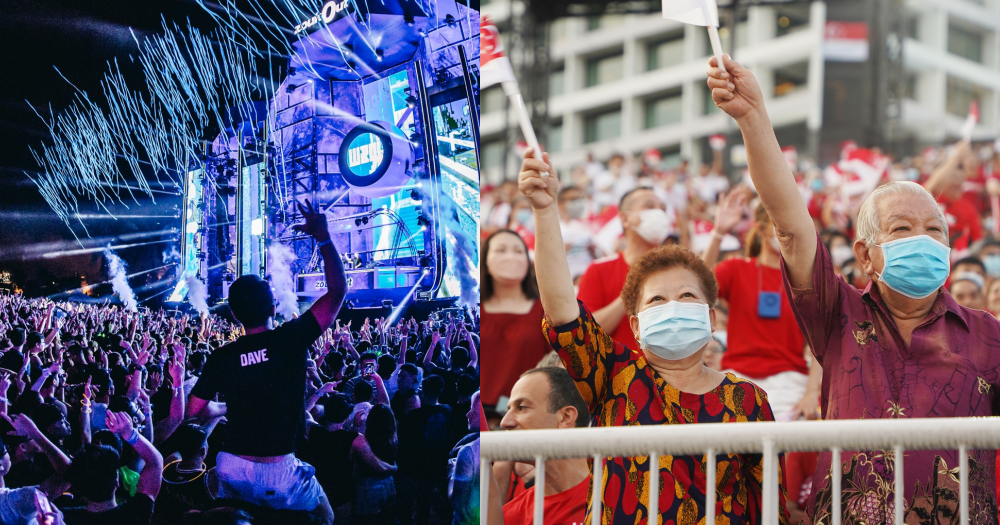Follow us on Telegram for the latest updates: https://t.me/mothershipsg
On Oct. 29, youngsters in various parts of the world were buzzing about for the Halloween weekend.
People filled the streets in elaborate costumes, out and about finding a good time.
This too was the scene in Seoul’s Itaewon district, where about 100,000 party-goers and tourists gathered.
When a crowd is packed together in a confined space, any movement like nudging and pushing can cause people to fall over, causing a domino effect.
This was what happened in the Itaewon crowd crush, which has seen more than 150 dead and more injured.
The area was regularly crowded with partygoers even before Covid-19, but things never turned out this way before.
Could this seemingly random occurrence happen here in Singapore?
There are two major factors in how Singapore is built that could influence this: our built environment, and how we plan for crowd control.
We take a closer look at why and how the Itaewon crowd crush happened, and the extent to which those factors are present in Singapore.
What led to crowd crush?
The crowd crush mainly occurred on a narrow slope behind the Hamilton Hotel.
This path connects the main streets of Itaewon to Exit 1 of the Itaewon subway station.
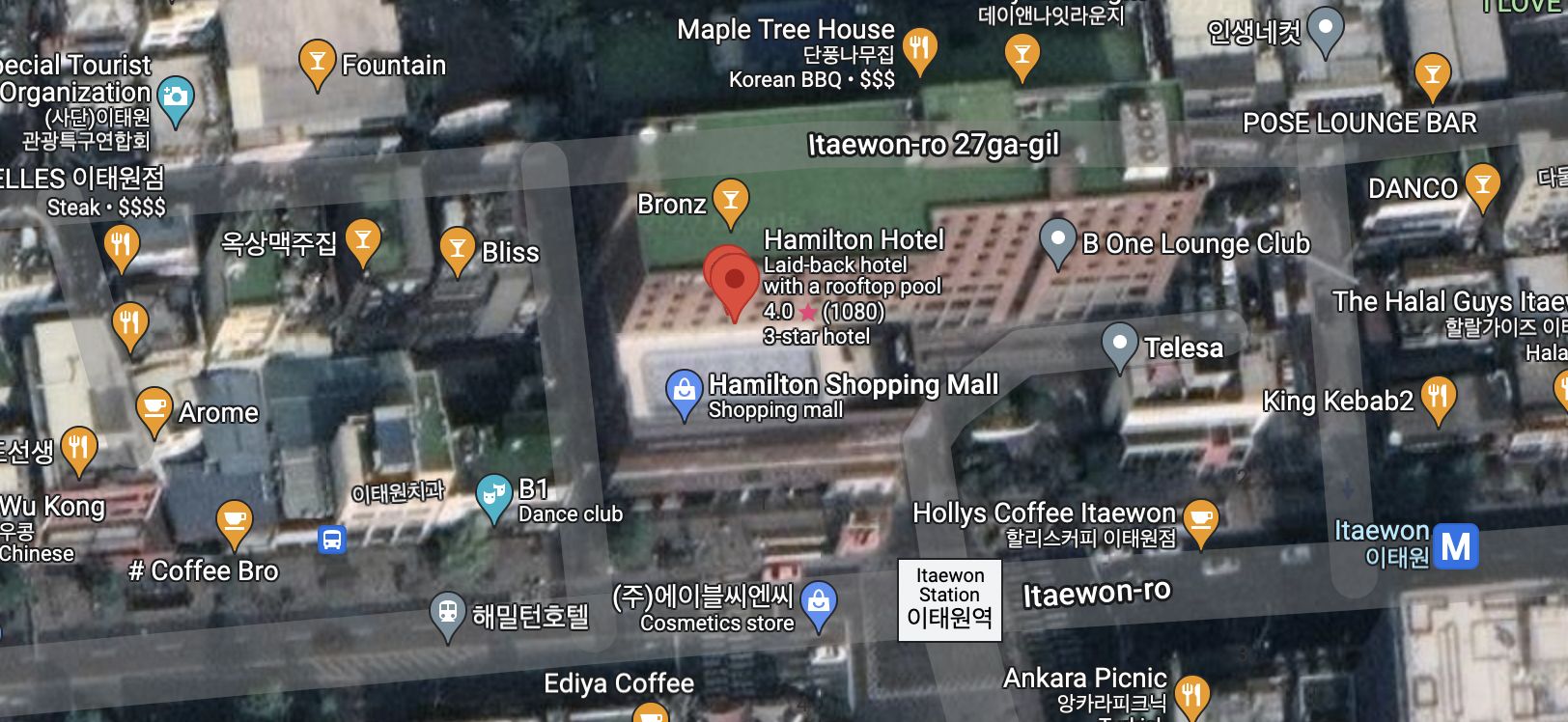 Image via Google Maps.
Image via Google Maps.
Hundreds of people were squeezing through a 45 metre-long, 4m-wide walkway, with some parts as narrow as 3.2 metres, according to Korea JoongAng Daily.
As more tried to enter the already packed street, those in the crowd quickly found themselves shoulder-to-shoulder with each other.
Some tried to push their way in and out.
One man, desperate, scaled a wall to climb out of the throng in a bid to make his way to safety as the crowd beneath him cheered – oblivious to the danger they were in.
The narrow pathway was flanked by two buildings:
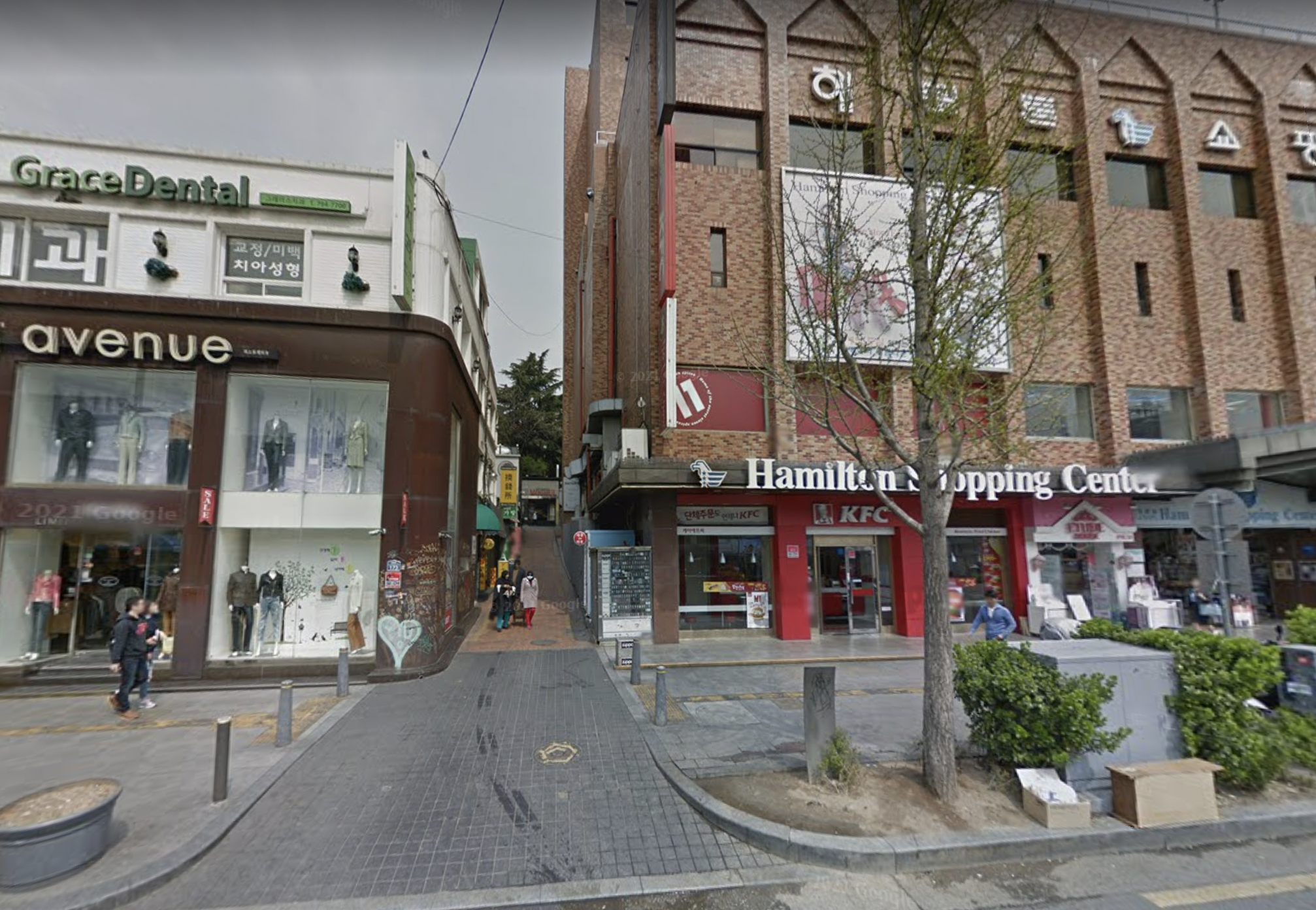 Image via Google Maps.
Image via Google Maps.
Witnesses recounted to Yonhap that the crowd crush happened after a "massive group of people" surged into the sloped alleyway.
"People kept pushing down into a downhill club alley, resulting in other people screaming and falling down like dominos," Yonhap reported a witness sharing.
In a video posted on Twitter, some who were not caught in the crowd crush were seen standing on a staircase at the side of Hamilton Shopping Centre attempting to pull out those on top of the pile.
https://twitter.com/MdFasahathullah/status/1586628493517139970
Meanwhile, those at the bottom were fighting to breathe as police officers present attempted to rescue them.
Crowd crush
A crowd crush occurs when there are more than four people per square metre, crowd behaviour expert at the University of Greenwich, Prof Edwin Galea told The Guardian.
It becomes even riskier when it rises to six per square metre.
Itaewon, i was in the heart of it too 😭 pic.twitter.com/f3j7ZwzXGu
— Annette (@hanbibikim) October 29, 2022
In situations where people squeeze to such an extent they can no longer inflate their lungs, they are at risk of “compressive asphyxiation”, said Galea.
This is when respiration is prevented by external pressure on the body, often when a heavy weight is on the chest or abdomen.
This was seen in the Itaewon crowd crush where layers of people were stacked on top of one another and many lost consciousnesses.
Why has this never happened before?
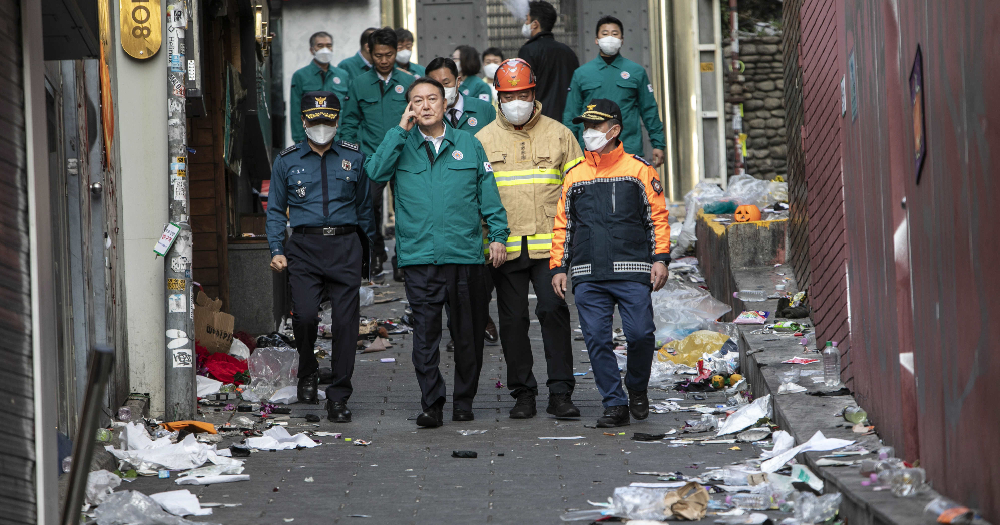 Top image via Jean Chung/ Getty Images
Top image via Jean Chung/ Getty Images
Itaewon regularly attracts large crowds. But the Halloween weekend promised something more.
With pandemic-related regulations and travel restrictions recently lifted, the street saw both young Koreans and tourists looking to have a good time.
However, that weekend also reportedly saw large anti-government and other protest rallies, said the country’s home minister, Lee Sang-min.
As such, police resources were spread between events and only 137 police officers were deployed to manage Itaewon’s 100,000-strong crowd.
The police there were mostly ordered to look out for crimes like sexual harassment, theft and drug use, and were not specifically tasked with crowd control, according to The New York Times.
Though as the situation escalated, the police received calls about the crowded streets.
South Korea’s National Police Agency revealed on Tuesday (Nov. 1) that 11 emergency calls started coming in around four hours before the disaster, according to Yonhap.
Transcripts of the emergency calls disclosed show that many of the callers told police they felt like they were going to be "crushed to death".
This led many to believe that the tragedy, which killed at least 156 people, was avoidable.
Four days after the devastating event, South Korea's police chief, Yoon Hee-keun, admitted that their emergency response to the Itaewon crush was "inadequate".
Urban design and crowd control
Singapore University of Technology & Design's Jeffrey Chan, an assistant professor of Design and Artificial Intelligence, in the Humanities, Arts and Social Sciences pillar said increased human density during the street party in South Korea was “far beyond what is considered safe”.
The sloped, narrow street exacerbated the risk of the accident, he added.
To address this in Singapore, there are stipulated minimum widths for pedestrian pathways.
In areas with high foot traffic, or in underground spaces, the minimum widths tend to be greater, for "an extra margin or safety".
One occasionally sees "barrier type” features to regulate pedestrian traffic as well.
This is observed in the Orchard area for example, where the spacious walkways of shopping malls funnel into relatively confined underground passageways.
“For example, one sees a fence that regulates high bi-directional pedestrian flow in the underpass between Ngee Ann City and Wisma Atria.”
Responding to Mothership’s queries on urban design and crowd control, the Urban Redevelopment Authority (URA) said its planning process involves working closely with developers to ensure public spaces are meaningfully sized, taking into consideration factors such as pedestrian traffic and the surrounding environment.
Crowd crush not only in confined space
But we have seen tragedies involving large crowds that were not confined to a tight space like in the Itaewon crowd crush.
A year ago, at Travis Scott‘s Astroworld Festival in Houston, the event saw a total of 10 people dead and hundreds injured after the crowd surged towards the stage.
Breaking overnight: at least 8 dead & many injured after crowd surge at Travis Scott's #Astroworld Festival in Houston. There's an emergency line set up if you need to check in on anyone. Call (832) 393-2991 or (832) 393-2990. More: https://t.co/Ye5meXDCPD #KAKENews pic.twitter.com/uezYswzgrw
— Annette Lawless KAKE 🌻 (@AnnetteLawless) November 6, 2021
There were 50,000 attendees at the festival.
Local police who investigated the incident concluded it was caused by a crowd surge and people could not escape the situation.
In October 2022, more than 170 people died in a stampede at an Indonesian soccer match after fans rushed onto the pitch.
To control the situation, police officers fired tear gas, triggering a crowd control situation and cases of suffocation.
Large events in Singapore
As the world recovers from the Covid-19 pandemic, Singapore is welcoming back large-scale events like the National Day Parade and Formula 1.
And Singapore is anticipating more large-scale events like ZoukOut, where up to 30,000 partygoers are expected at Sentosa this December.
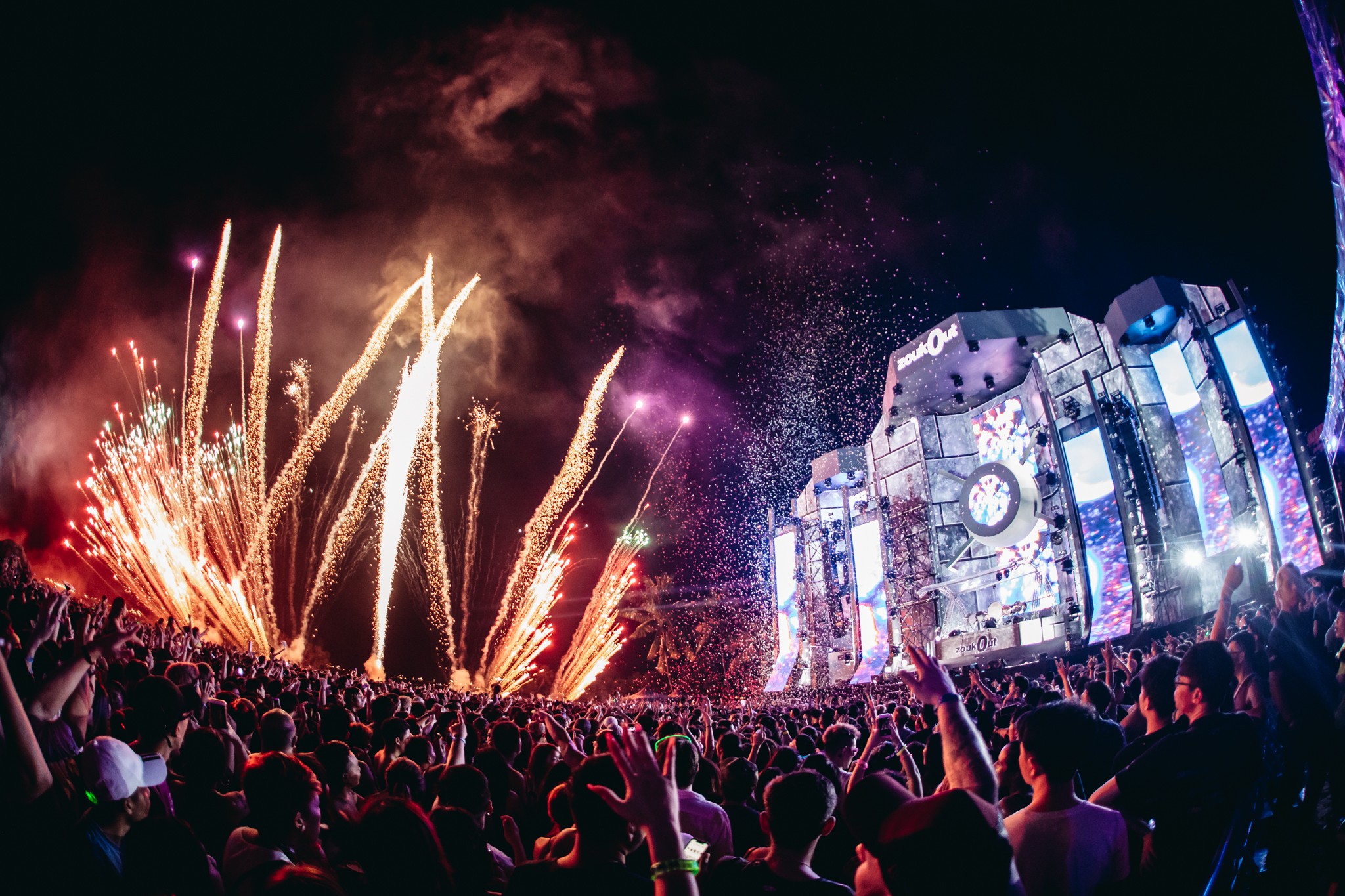 Image via ZoukOut/FB.
Image via ZoukOut/FB.
National Day 2022 provides an example of how a crowd can be managed with advance planning.
On the day, there were 25,000 people at the Marina Bay floating platform, while heartland areas across Singapore saw a total of 150,000 people gathering.
The Singapore Police Force (SPF) provided a real-time update on crowd situations via an online map.
As NDP 2022 spectators filled areas at the Esplanade, Marina Bay Sands, and Fullerton Waterfront to a predetermined maximum capacity, SPF closed off those areas so the crowds would not get even denser.
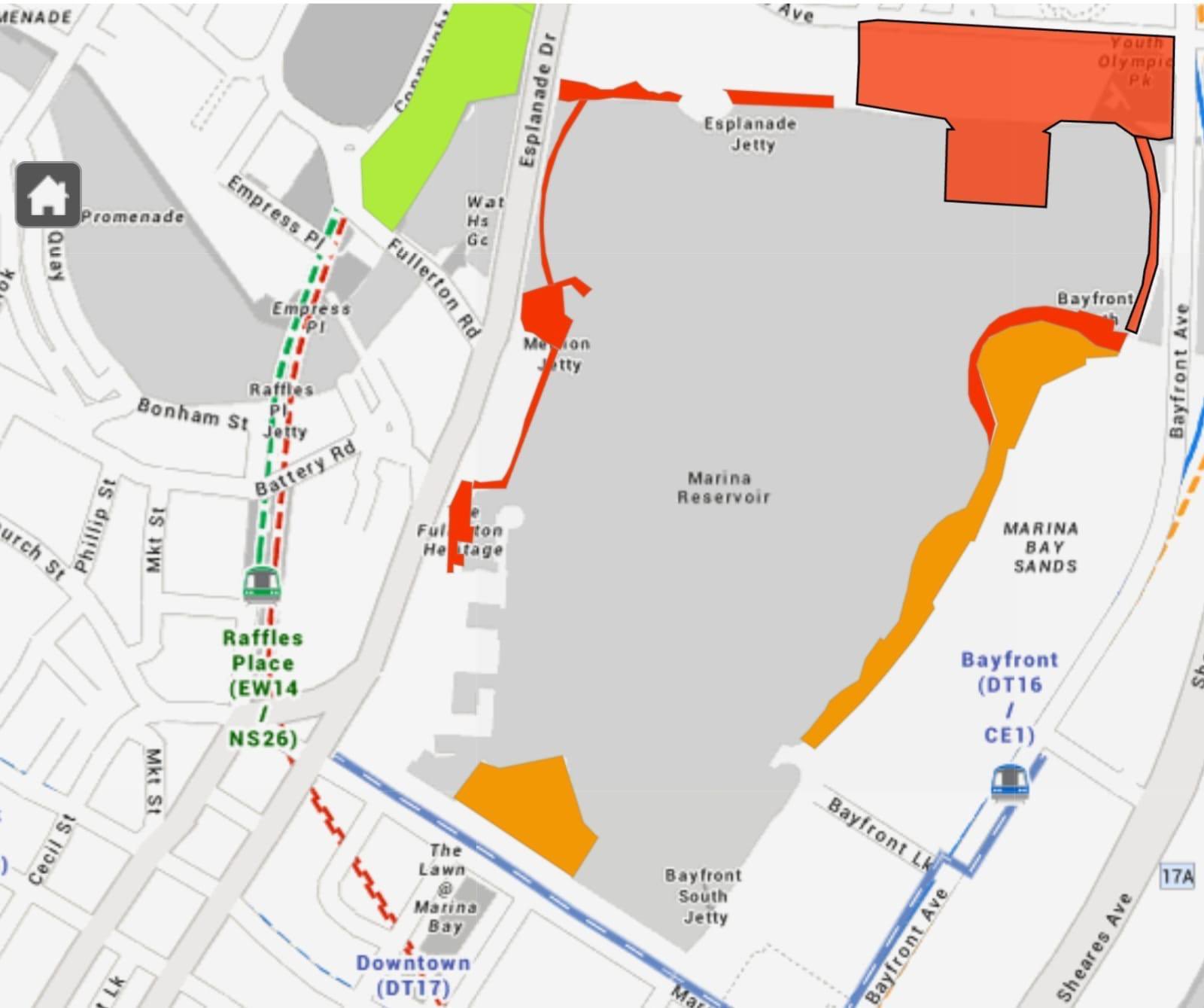 Zones of different levels of crowdedness. Image via SPF/Twitter.
Zones of different levels of crowdedness. Image via SPF/Twitter.
In addition to this, SPF used drones and patrol robots for crowd management and public security operations, reported The Straits Times.
Patrol robots were deployed at high footfall locations and drones captured images to derive crowd size, density and flow.
These methods were used to identify potential choke points and overcrowded areas so that intervention measures to ease congestion could be taken in a timely and appropriate manner.
Previously, the robots were also deployed at National Day Parade 2019, Marina Bay Countdown 2020 and Chingay 2020.
Another big event this year was the Formula 1 Singapore Airlines Singapore Grand Prix 2022 which set a new record in attendance with 302,000 fans.
Besides road closures, the SPF was also deployed to direct the crowds leaving Marina Bay.
Police warned that the dispersal of people was likely to be slow due to the large crowds leaving at the end of each race day.
The police advised the public to take alternative routes.
Of course, these events are held in large areas and are organised well in advance, with crowd control in mind.
But crowds do not only form at large events, as we saw in Itaewon. How can we protect ourselves, if caught in a similar situation?
Keeping yourself safe
SPF, addressing Mothership's queries on crowd control, highlighted the importance of public alerts about crowded spaces.
An example was how they monitored the crowds during the 2022 NDP and advised against going to already-packed locations.
Crowd safety experts who spoke to The New York Times said that understanding how popular an event may be, and its location, will help you better prepare yourself for the crowd.
In addition, when you enter the venue, look out for where the exits are and observe how the event is organised.
If you notice there isn’t much staff or security around, and no is one controlling and directing the crowd, this may be an indicator it is poorly organised.
If you feel a crowd is getting distressed and people start shouting, this may be a sign that a crowd is becoming dangerous.
And if you do find yourself getting stuck in a dense crowd, here are some tips to protect yourself from danger:
Stand like a boxer
Put your arms in front of your chest, to create more space between you and the person in front of you, Paul Wertheimer of Crowd Management Strategies tells The Washington Post.
Save your breath
Try not to shout, as this helps you conserve energy and oxygen.
Don’t bend down
If you drop something on the ground, don’t try and pick it up as you are unlikely to get back up.
Should you trip and fall, expert advice is to get up immediately. And if you can’t, try to lie on your left side — which shields your heart and lungs better — and protect your head.
Top image via ZoukOut and NDPpeeps/FB.
If you like what you read, follow us on Facebook, Instagram, Twitter and Telegram to get the latest updates.
